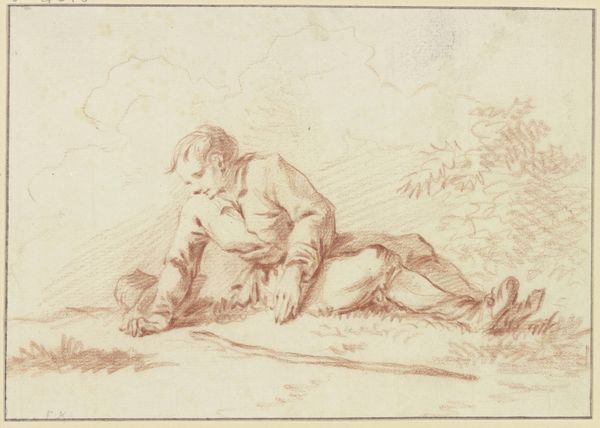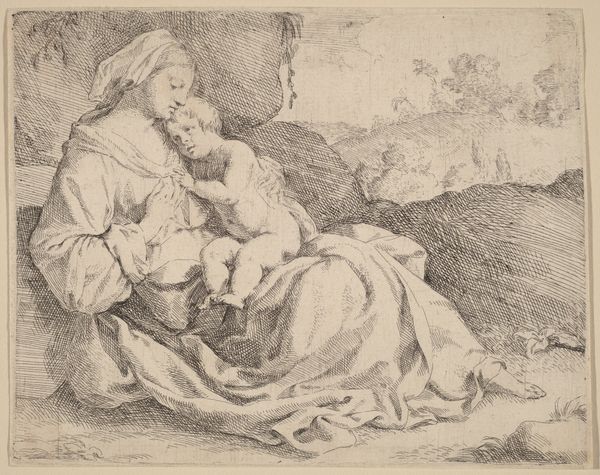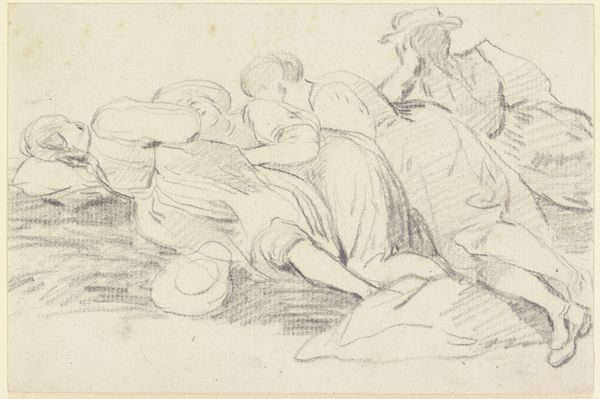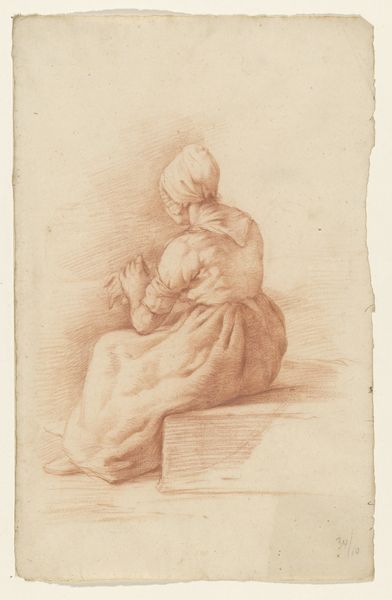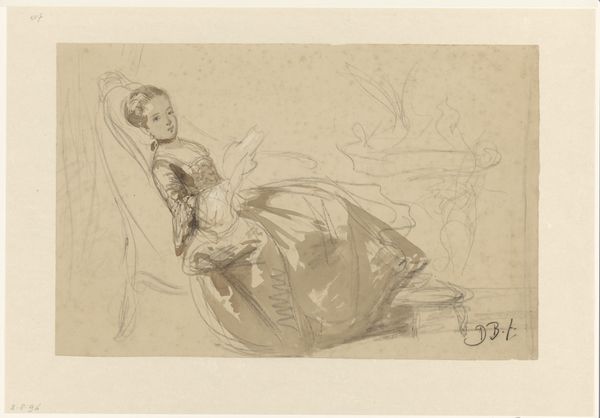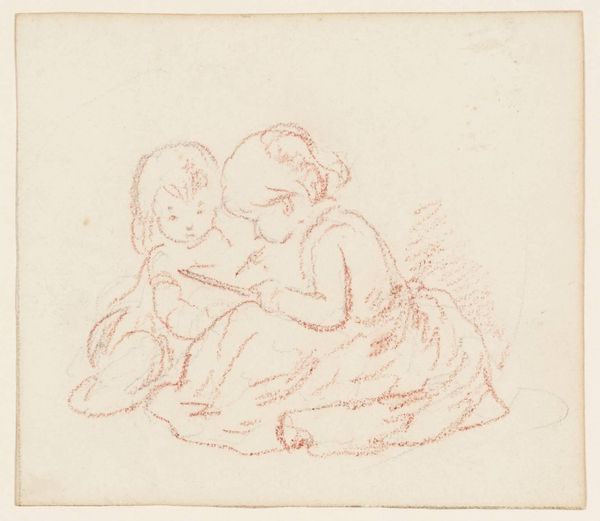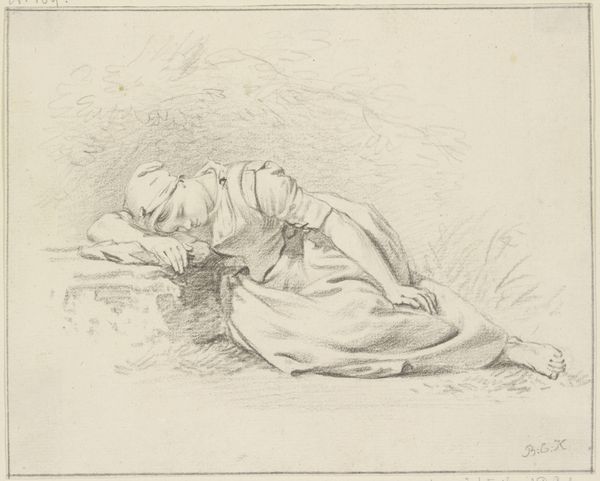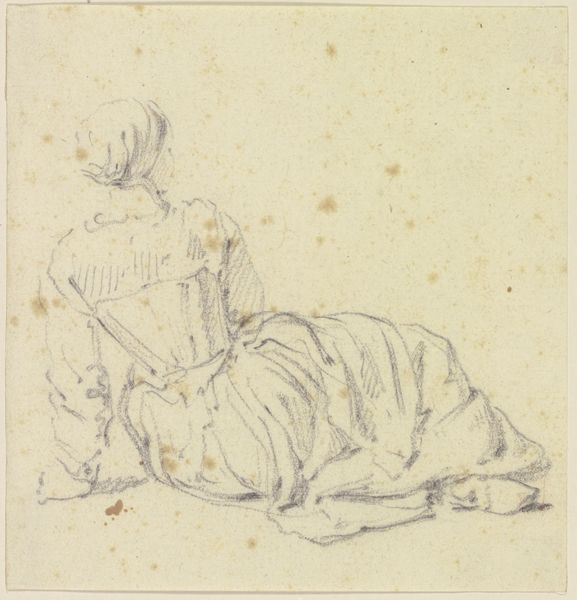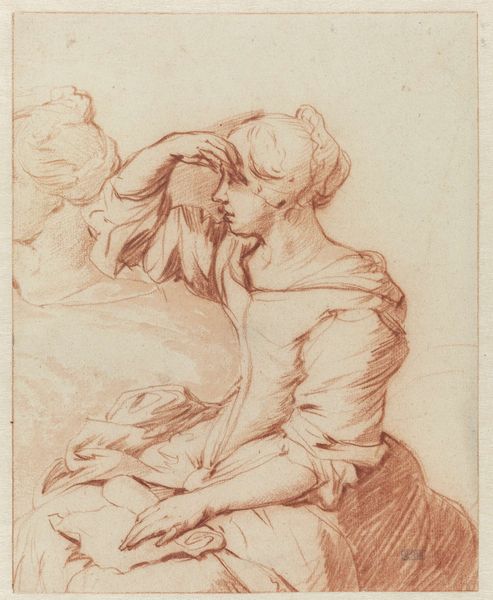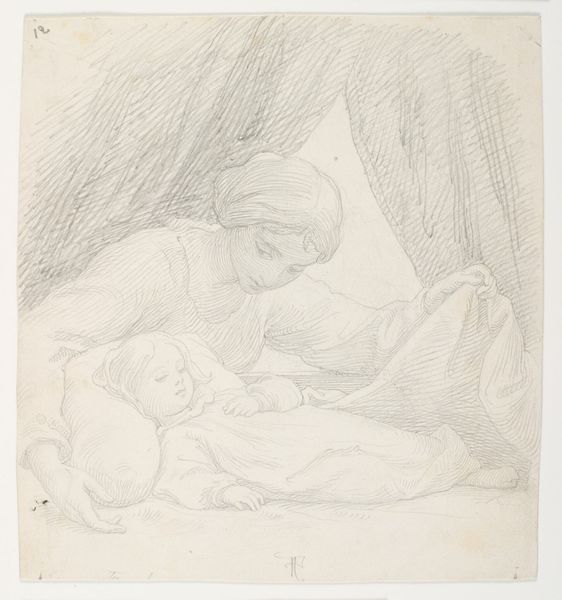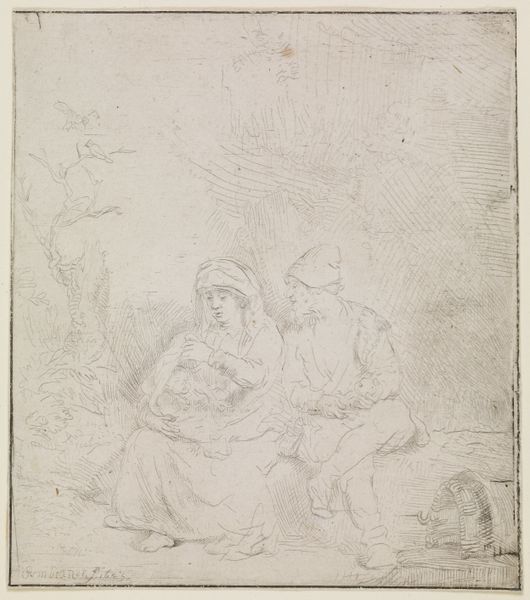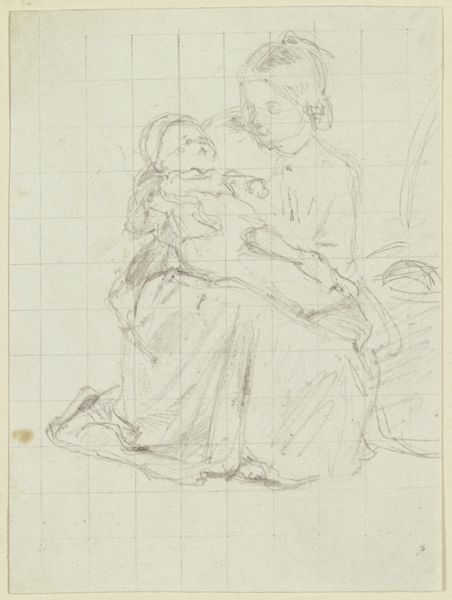
drawing, paper, pencil
#
portrait
#
drawing
#
figuration
#
paper
#
pencil
#
portrait drawing
#
academic-art
Copyright: Public Domain
Curator: "Madonna unter einem Baum sitzend," housed here at the Städel Museum, presents a seated Madonna cradling a child, tenderly sketched on paper using pencil. What strikes you immediately about this work? Editor: The pervasive gentleness of the lines. Even with so few darks, the emotional atmosphere is palpably intimate. It invites a maternal reading but I feel like the academic-art label hints toward the social issues of representation… Curator: Indeed. It’s crucial to consider how even what appears a straightforward scene is produced, disseminated, and consumed. Think about the paper itself. Where was this paper manufactured? What labor conditions made this possible? We're accustomed to seeing academic drawings but maybe it would be interesting to note it doesn't exist in a vacuum. Editor: Absolutely. This image idealizes motherhood, but for whom was this ideal intended? Is this presentation rooted in lived realities, or a patriarchal construction of femininity designed to uphold particular social and economic hierarchies? There's such quiet here, but I think it masks complex issues around female identity, and perhaps the very economics of the commission itself... How much paper did the artist consume? Curator: A salient point! To me, the repetitive shading might tell the viewer how academic and conventional representation could lead to some repetitive practices and maybe even to the alienation of the labor required. Editor: The way they touch also calls for more thought. To examine her posture and expression allows a better consideration of these social structures. How often do we see Madonna portraits from a female gaze? Curator: Analyzing its form helps us decipher and decode not just the representation of Mary but also what type of material practices contribute to the artistic piece itself, shedding light to both consumption of material goods but also ideological representation and power at play. Editor: Precisely. Looking past its surface beauty allows a recognition of artistic and historical significance in portraying identity and cultural narrative that challenges the conventional aesthetic. Curator: Thank you for providing a thoughtful discussion. I feel the significance of materials and practices enhances a dialogue for social change, by helping a shift toward contemporary concerns and how labor meets ideological constructions. Editor: It seems that both a deeper understanding and a fresh interpretation arise as you contextualize academic portraits using modern theories of politics and intersectionality, by enhancing critical perspectives of history in artwork analysis.
Comments
No comments
Be the first to comment and join the conversation on the ultimate creative platform.

